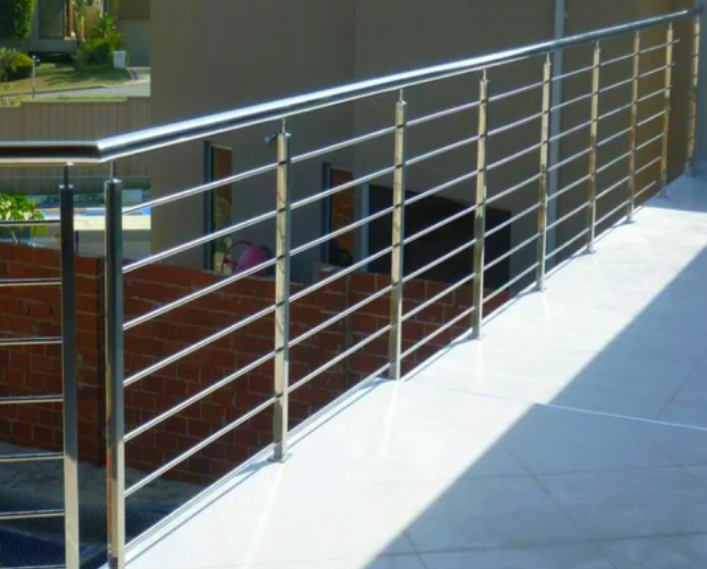Balcony Railing Design Steel: An Overview
Balcony railings play a crucial role in ensuring safety and enhancing the aesthetic appeal of a building’s exterior. Steel, with its inherent strength, durability, and versatility, has emerged as a popular choice for balcony railing design, offering a myriad of options to suit diverse architectural styles. This comprehensive article delves into the intricacies of balcony railing design steel, exploring its types, applications, properties, and design considerations. By understanding the nuances of steel balcony railings, architects, engineers, and homeowners can make informed decisions that result in safe, functional, and aesthetically pleasing outdoor spaces.
Balcony Railing Design Steel
Types of Balcony Railing Design Steel
The steel used in balcony railing design primarily falls into two categories:
- Mild Steel: Also known as carbon steel, mild steel is the most commonly used type of steel in balcony railings due to its affordability, ease of fabrication, and adequate strength. While it exhibits good corrosion resistance, it may require additional protective coatings to ensure longevity in harsh environments.
- Stainless Steel: Renowned for its exceptional corrosion resistance, stainless steel is an ideal choice for balcony railings in coastal areas or locations with high humidity and pollution. It offers superior strength and durability compared to mild steel, making it a preferred option for high-end residential and commercial projects.
Applications of Balcony Railing Design Steel
Balcony railing design steel finds widespread application in a variety of settings, including:
- Residential Buildings: Steel balcony railings are extensively used in apartments, houses, and townhouses, providing safety and enhancing the overall appearance of the property.
- Commercial Buildings: Offices, hotels, and retail establishments employ steel balcony railings to ensure safety while maintaining a sleek and modern aesthetic.
- Public Spaces: Parks, plazas, and public squares utilize steel balcony railings to create safe and visually appealing outdoor areas.
- Industrial Facilities: Factories and warehouses often incorporate steel balcony railings for safety purposes and to facilitate access to elevated platforms or walkways.

Properties of Balcony Railing Design Steel
The properties of steel that make it suitable for balcony railing design include:
- Strength and Durability: Steel possesses exceptional strength and durability, enabling it to withstand significant loads and harsh weather conditions.
- Versatility: Steel’s malleability allows for intricate designs and customization, making it adaptable to various architectural styles and project requirements.
- Corrosion Resistance: Stainless steel exhibits excellent corrosion resistance, making it ideal for applications near saltwater or in areas with high levels of pollution.
- Fire Resistance: Steel is non-combustible, providing an additional layer of safety in the event of a fire.
- Cost-Effectiveness: Mild steel is a relatively affordable material, while stainless steel offers a higher initial investment but provides long-term savings due to its durability and low maintenance requirements.
Design Considerations for Balcony Railing Steel
When designing balcony railings using steel, several factors require careful consideration:
- Safety: The primary purpose of a balcony railing is to ensure safety. It should be designed to withstand the required loads and comply with local building codes and regulations.
- Height: The height of the balcony railing is crucial for preventing falls. It should be at least 36 inches high, as per most building codes.
- Spacing: The spacing between the balusters or pickets should be narrow enough to prevent a child’s head from fitting through. Building codes typically specify a maximum gap of 4 inches.
- Material: The choice of steel, whether mild or stainless, depends on the desired aesthetics, budget, and environmental factors.
- Design: The design of the balcony railing should complement the architectural style of the building and enhance the overall visual appeal.
- Maintenance: Steel balcony railings require regular maintenance, including cleaning and periodic inspection, to ensure their integrity and longevity.
Balcony railing design steel offers a versatile and durable solution for enhancing safety and aesthetics in various settings. By understanding the different types, applications, properties, and design considerations of steel balcony railings, architects, engineers, and homeowners can create safe and visually appealing outdoor spaces that contribute to the overall appeal of a building. The inherent strength, durability, and adaptability of steel make it an ideal choice for balcony railings, ensuring years of reliable performance and timeless beauty.

Bir yanıt yazın